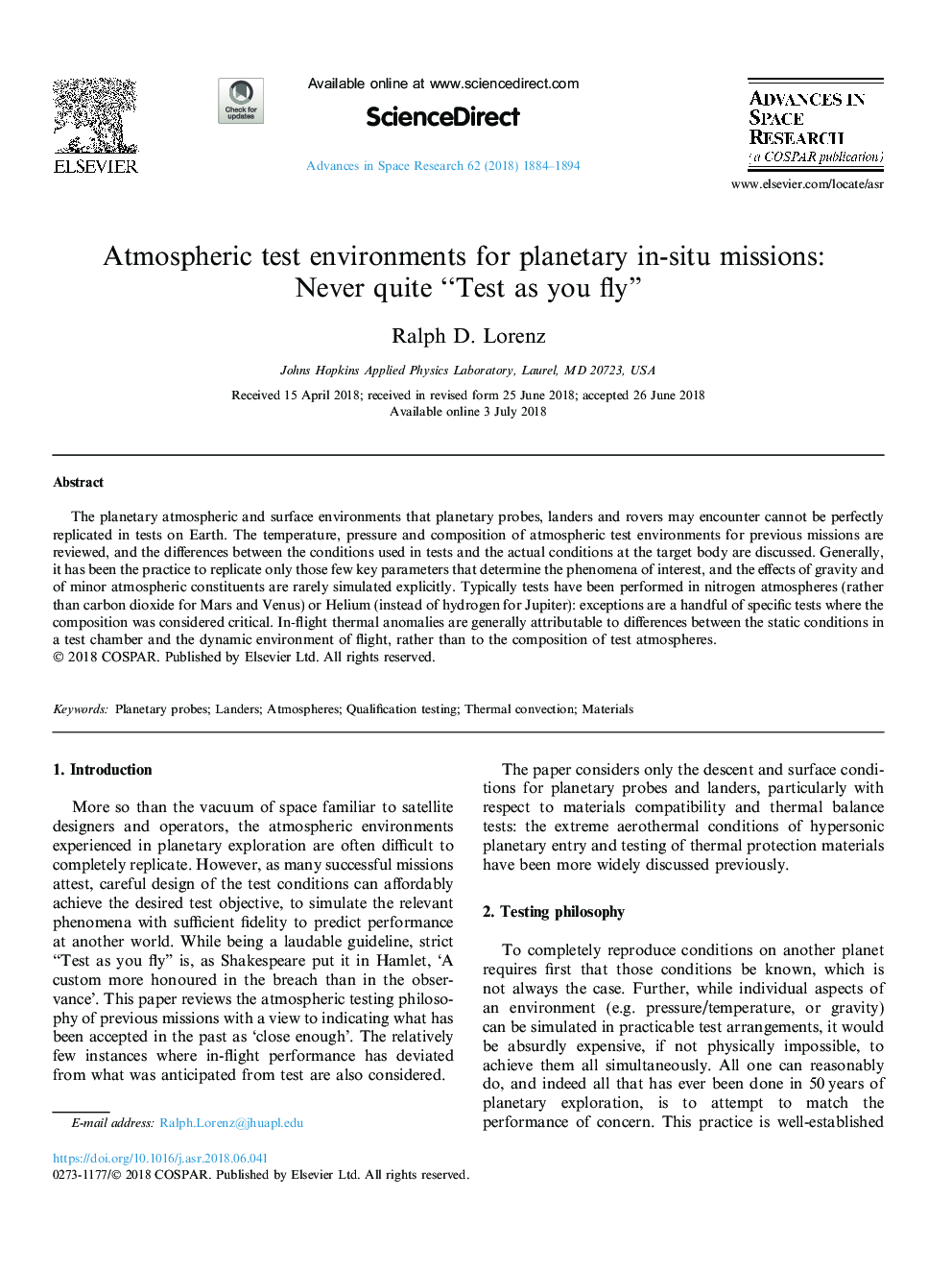| Article ID | Journal | Published Year | Pages | File Type |
|---|---|---|---|---|
| 8948936 | Advances in Space Research | 2018 | 11 Pages |
Abstract
The planetary atmospheric and surface environments that planetary probes, landers and rovers may encounter cannot be perfectly replicated in tests on Earth. The temperature, pressure and composition of atmospheric test environments for previous missions are reviewed, and the differences between the conditions used in tests and the actual conditions at the target body are discussed. Generally, it has been the practice to replicate only those few key parameters that determine the phenomena of interest, and the effects of gravity and of minor atmospheric constituents are rarely simulated explicitly. Typically tests have been performed in nitrogen atmospheres (rather than carbon dioxide for Mars and Venus) or Helium (instead of hydrogen for Jupiter): exceptions are a handful of specific tests where the composition was considered critical. In-flight thermal anomalies are generally attributable to differences between the static conditions in a test chamber and the dynamic environment of flight, rather than to the composition of test atmospheres.
Related Topics
Physical Sciences and Engineering
Earth and Planetary Sciences
Space and Planetary Science
Authors
Ralph D. Lorenz,
